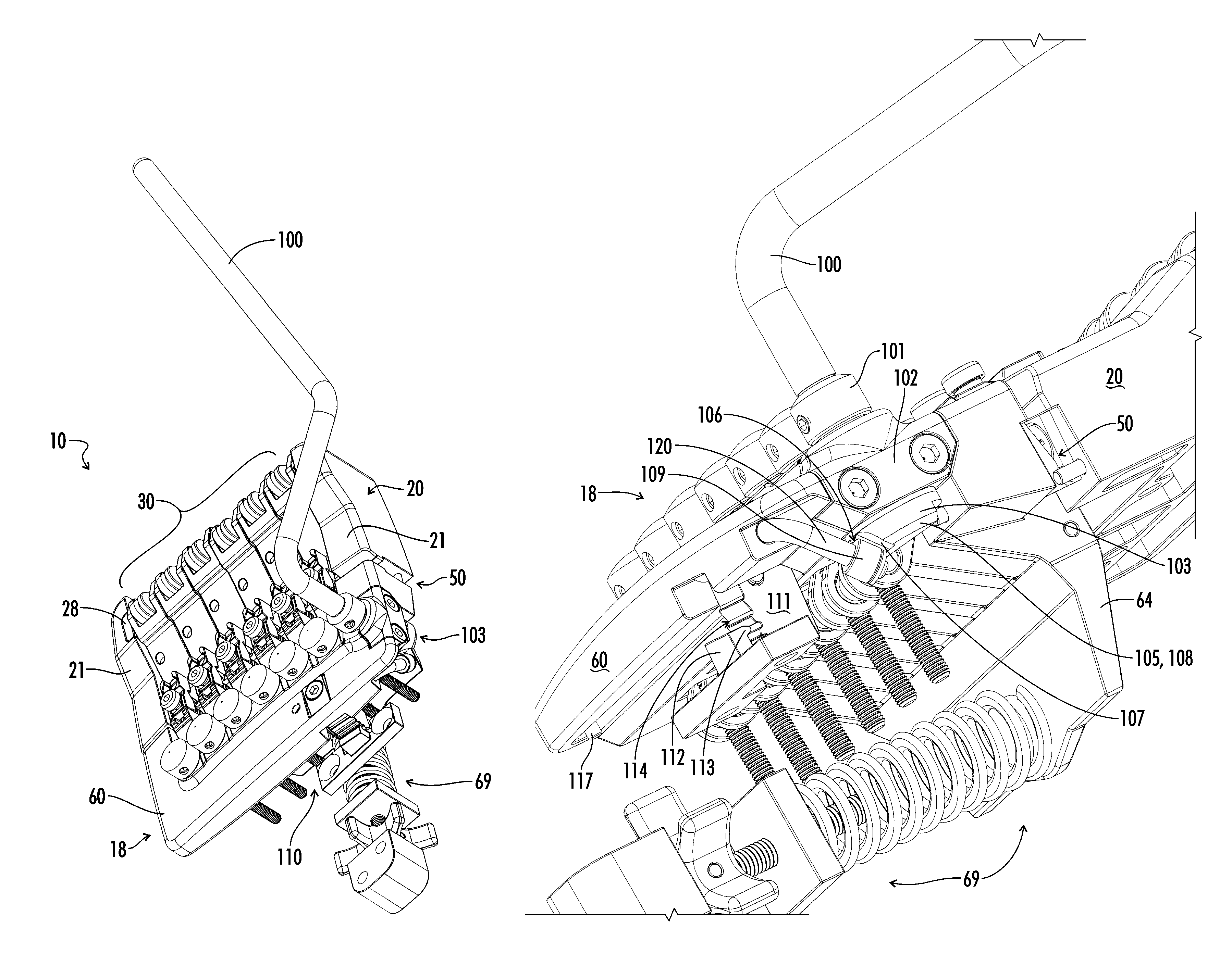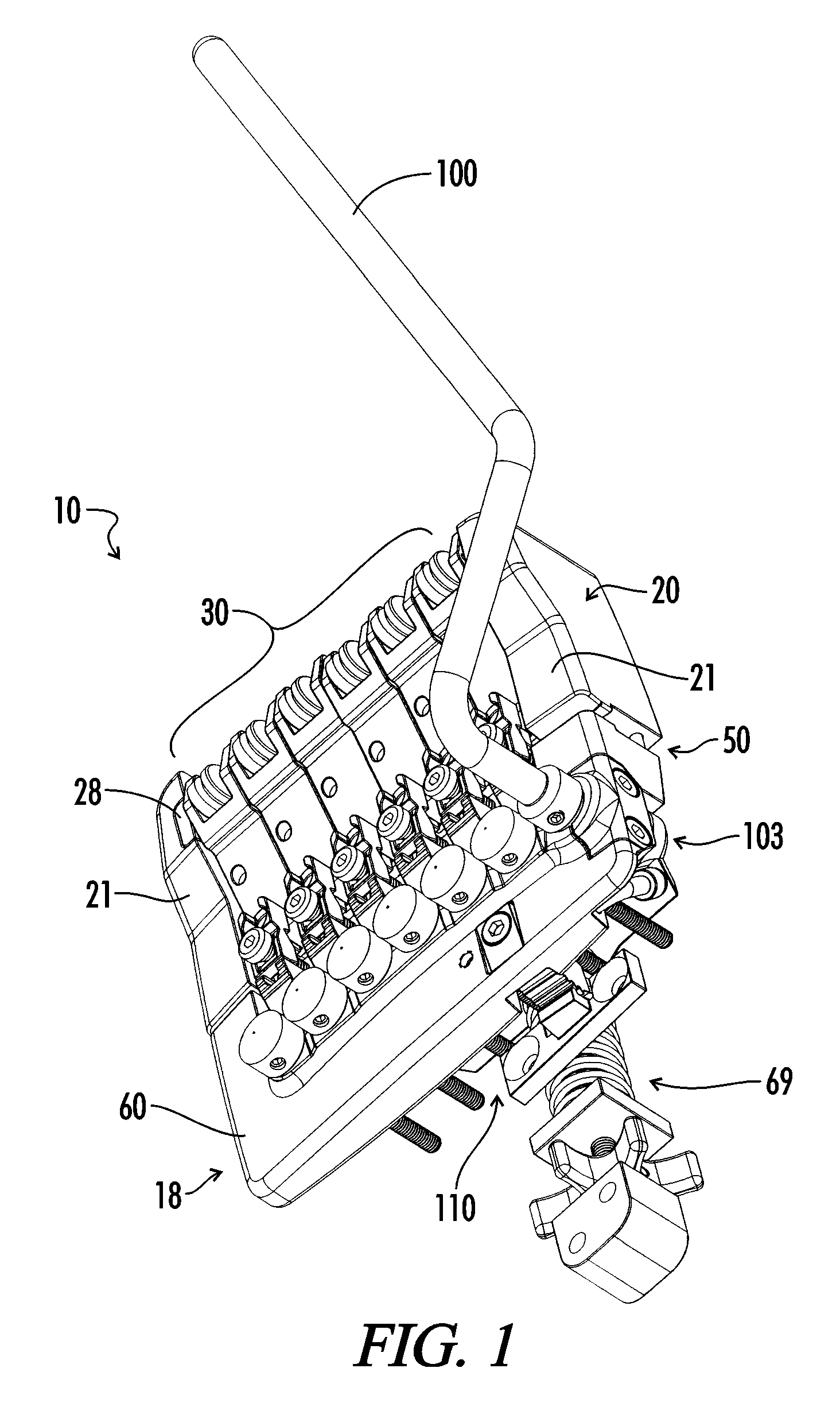Tremolo mechanism for a stringed musical instrument with cam actuated lock
a musical instrument and cam actuation technology, applied in the direction of stringed musical instruments, instruments, musical instruments, etc., can solve the problems of disc shaped balls jamming or cocking in the anchor bore, jammed balls may also become displaced from the bore, and inability to adjust the tension of the string end anchor, etc., to prevent inadvertent displacement of the locking ridge
- Summary
- Abstract
- Description
- Claims
- Application Information
AI Technical Summary
Benefits of technology
Problems solved by technology
Method used
Image
Examples
Embodiment Construction
[0041]A novel tremolo mechanism 10 of the present invention is shown in FIGS. 16a and 15b attached to a guitar 1 having a body 3, a neck 5, and a plurality of tensioned strings 12, each string 12 anchored at one end to the neck 5 and extending over the body 3 in a generally parallel manner. A preferred embodiment of the tremolo mechanism 10 of the present invention is shown in FIGS. 1-4. When used with a guitar 1, the tremolo mechanism 10 includes a base 20 mounted to the body 3 of the instrument. The base 20 includes a support surface 25 (see FIG. 8) and two support walls 21 disposed on either side of the base 20. Vibratory endpoints for the plurality of tensioned strings 12 are provided by a bridge 30. The bridge 30 includes a plurality of saddle assemblies 31 disposed on the support surface 25. A saddle clamp 28 aligns the saddle roller assemblies 31 between the support walls 21. Each saddle roller assembly 31 includes a saddle roller 34 having a circumferential seat 35 disposed ...
PUM
 Login to View More
Login to View More Abstract
Description
Claims
Application Information
 Login to View More
Login to View More - R&D
- Intellectual Property
- Life Sciences
- Materials
- Tech Scout
- Unparalleled Data Quality
- Higher Quality Content
- 60% Fewer Hallucinations
Browse by: Latest US Patents, China's latest patents, Technical Efficacy Thesaurus, Application Domain, Technology Topic, Popular Technical Reports.
© 2025 PatSnap. All rights reserved.Legal|Privacy policy|Modern Slavery Act Transparency Statement|Sitemap|About US| Contact US: help@patsnap.com



